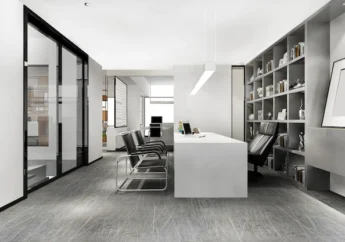How to Choose a Video Conferencing System for Your Small Business
by Arina Smith Small Business 08 February 2018

You cannot run away from the fact that we are living in a mobile world. Most employees are now working from the comfort of their houses, in the field or even at coffee shops. You may also discover that business partners, suppliers, and customers are spread all over the country or world.
The good thing is that technology has been maintaining the right pace with the mobile world. The collaboration technology and cloud-based video conferencing give an affordable way for small enterprises to meet with their partners, customers, and employees who are spread all over the world.
However, we have so many vendors which makes it a daunting task to choose a video conferencing solution. Therefore, most small business owners have a challenge when it comes to choosing the right solution. Here are some tips on how to get a video conferencing solution that fits your specific needs and budget.
Scalability:
Even a small business should think about the typical size of its potential video conferences from the onset. Will, you only be collaborating with two or three people or the platform will grow over time. You also need to understand whether your collaboration will be across multiple locations of just a single region. The solution you choose should be able to serve the number of individuals you anticipate and support connectivity across multiple devices, operating systems and locations.
Capabilities:
You also have to think about how the employees of your small business do their work. Which documents will they be sharing or presenting to the other remote users? Ask yourself whether screen sharing or file transfers is important to you. Also, you need to understand the type of operating systems or devices they will be using to connect. The solution you settle on must be compatible with the kind of applications you require to enhance your productivity. You need to understand the type of operating systems and devices that your customers, employees, and business partners will be using to connect.
Quality:
The video or audio quality should exceed the professional expectations of the people you are interacting with irrespective of the size of your business. Start by figuring out the amount of bandwidth that will support the level of quality you expect to receive. Most video conferencing calls consume approximately 128 KBS or up to 4 Mbps of mobile connection. The requirement can be higher if you are connecting several individuals at the same time. Using HD video or room-based connections can also influence the size of bandwidth that you require. Running multiple video conferences or high-end systems at the same time may require 10 to 20 Mbps.
Accessibility
You need to understand the best venue for your video conferencing. Will it be a huddle room or small conference? In some instances, you may just want a single employee on the call at the same time. A mobile or desktop connection may be more flexible or work better. Remember some of your partners and customers will be using their desktops, mobile devices, or even room-based solutions to connect. You need to understand the type of operating systems they are using to connect and choose a software that is proprietary and works with all types of operating systems and devices.
How to narrow Down Your Solutions:
After answering all the above questions, it is now time to start exploiting the available solutions.
Cloud Services:
If the common use case of your small business sees employees connecting personally from their mobile devices or desktops, you can decide to skip cash outlay within an in-room system. Employees can instead connect to their mobile devices or desktops directly through a reliable cloud-based service provider. Think about the kind of applications you will use and services you will require as you consider cloud-based service providers.
Read Also: Can Cloud Computing Help You Run Your Real Estate Business Smarter?
In-Room Solution:
If you expect to have a team of employees’ video calling with customers, you can go for an in-room solution. This software come with a camera, speakers, and display already installed with them. They allow small businesses to have video calls with other remote participants.
In summary, small businesses can benefit greatly from video conferencing systems as long as they make the right choices. These solutions are not only designed for big brands. Some of the factors to consider include scalability, capability, quality, accessibility, and your budget just to name a few. You can go for cloud-based solutions or in-room solutions as long as they meet your business needs with a lot of precision.
Read More:









































































































